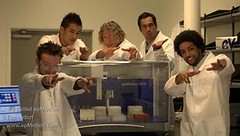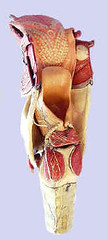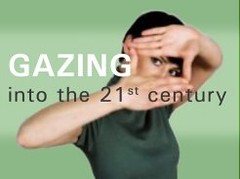The journal Medical Humanities — one of the journals in the BMJ Group portfolio, started in the year 2000 as a twice-yearly special edition of the Journal of Medical Ethics (JME) — is on the outlook for new manuscripts.
The incoming editor Deborah Franklin (who also has her own blog), says that the journal has the ambition to (continue to) be
a leading international journal that reflects the whole field of medical humanities, with high quality articles relevant to humanities and arts scholars, social scientists and policy-makers, medical educators, health care professionals, and patients
and so she is looking for original research papers — both theoretical and empirical — written by historians, anthropologists, literature scholars, philosophers, film studies specialists, and economists etc. (she seem to have forgotten reflective doctors and biomedical scientists which used to be the most frequent contributors to the field in ‘the old days’). In other words, Medical Humanities is broadening its disciplinary profile.
The explicit editorial policy is that papers should be readable by
any well informed individual, in particular by both health care professionals without specific expertise in the humanities, arts or social sciences and by scholars in the humanities, arts or social sciences with no practical health care experience
which may give some problems in the future when humanities journals will increasingly be divided into A, B and C etc. levels of excellence. Will a journal aimed at “any well informed individual” survive in this hardening journal policy climate? I cannot find Medical Humanities on the ERIH initial lists, but the 2007 impact factor of its mother journal (JME) is 1.103.
Anyway, if you wish to submit a manuscript, go to http://submit-mh.bmj.com, and if you have any questions, write to mh@bmjgroup.com.



 (see it in the right context, and better resolution, on
(see it in the right context, and better resolution, on 
 Now at least two companies (
Now at least two companies (
 A profile is (says
A profile is (says  WikiProteins is the first project (so far in beta) by the new semantic (concept) web initiative
WikiProteins is the first project (so far in beta) by the new semantic (concept) web initiative  The immediate occasion for the meeting is that the Museum Boerhaave has completed the restoration of their collection of
The immediate occasion for the meeting is that the Museum Boerhaave has completed the restoration of their collection of  What’s a ‘liquid image’ (or ‘the liquidity of the image’ for that sake)? The answer may be given at the Second International Conference on Image Science in the Göttweig Monastery near Vienna, 16-18 October.
What’s a ‘liquid image’ (or ‘the liquidity of the image’ for that sake)? The answer may be given at the Second International Conference on Image Science in the Göttweig Monastery near Vienna, 16-18 October. Assistance animals – from guide dogs to psychiatric service cats – unlike computerised machines, can establish a natural symbiosis with the patients who rely on them. Could animals be transformed into medical devices? This project proposes using animals bred commercially for consumption or entertainment as companions and providers of external organ replacement. The use of transgenic farm animals, or retired working dogs, as life support ‘devices’ for renal and respiratory patients offers an alternative to inhumane medical therapies. Could a transgenic animal function as a whole mechanism and not simply supply the parts? Could humans become parasites and live off another organism’s bodily functions?
Assistance animals – from guide dogs to psychiatric service cats – unlike computerised machines, can establish a natural symbiosis with the patients who rely on them. Could animals be transformed into medical devices? This project proposes using animals bred commercially for consumption or entertainment as companions and providers of external organ replacement. The use of transgenic farm animals, or retired working dogs, as life support ‘devices’ for renal and respiratory patients offers an alternative to inhumane medical therapies. Could a transgenic animal function as a whole mechanism and not simply supply the parts? Could humans become parasites and live off another organism’s bodily functions?